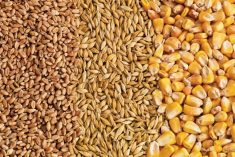SINGAPORE/SYDNEY (Reuters) — Rainfall in parts of Australia’s eastern grain belt over the past few days has improved soil moisture ahead of planting due to start this month, although much more is needed to boost the production outlook, analysts and traders said.
Higher soil moisture on the east coast could boost production of high-protein prime hard wheat, which is in strong demand in domestic as well as overseas markets.
Last year, the eastern producing states of Queensland and New South Wales received less than average rainfall, reducing yields and forcing customers such as Indonesia, Malaysia and Japan to seek supplies from Canada and the United States.
Read Also

U.S. livestock: Cattle, hogs end week on high note
Cattle contracts and nearby hog futures ended the week on a high note after a week rife with losses. Most-traded…
While Western Australia has seen higher than average rains this year, southern parts of the country have remained dry.
“We have had a bit of good rains on the northern parts of the east coast, but there are other areas such as Victoria and South Australia that are still dry,” said Ole Houe, analyst at Sydney-based brokerage IKON Commodities.
Benchmark Chicago wheat futures have come under pressure over the last two days with an improved weather outlook for the hard red winter wheat crop in the United States.
Mild spring temperatures and rains are also creating favourable conditions for Russia’s and Ukraine’s 2015 wheat crops, partially making up for a dry autumn.
Wheat production in Australia, the world’s fourth largest exporter, is expected to be the seventh highest on record in the coming season, the Australian Bureau of Agricultural and Resource Economics and Sciences said in March.
Australian wheat output will total 24.39 million tonnes in the 2015-16 season starting July 1, ABARES said, a rise of three percent from this year’s 23.61 million tonnes.
The planting outlook is positive in Western Australia, the country’s top wheat exporting state.
“In the west, the picture looks pretty good, but of course more rains will be needed for the east coast,” said Phin Ziebell, an agribusiness economist with the National Australia Bank.
Western Australia has seen more than twice the average amounts of rains between January 1 and March 31, according to the Bureau of Meteorology.
The weather forecast looks positive for planting in most parts of Australia, the weather bureau said, with more than a 60 percent chance of above average rains between April and June.
Beyond that, the outlook is uncertain, with the El Nino phenomenon looking more likely. Recent warming of the Pacific Ocean may signal an El Nino weather event is forming, the weather bureau said last week.














